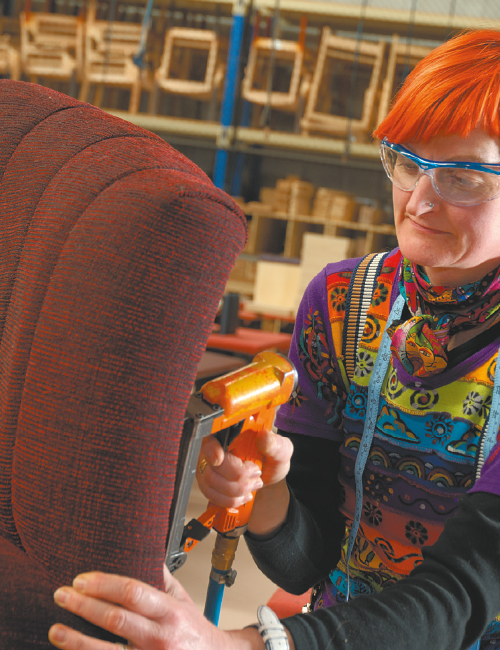The Australian Government recently announced funding for 100,000 new apprentices and trainees through a $1.2 billion Boosting Apprenticeship Commencement fund.
Training, what’s in it for you?
In the 2020/21 Budget it was announced that an apprentice wage study would be available to businesses of any size who take on a new or recommencing apprentice. The value of the subsidy would be up to 50% of the eligible apprentice gross wage, capped at $7,000 per quarter per apprentice. The eligibility period of the fund would be from 5th October 2020 to 30th September 2021. For the furniture and cabinet industries the ACFA eligible qualifications are MSF31113 Certificate III Cabinet Making in either Generic; Kitchens & Bathrooms or Furniture. MSF30213 Certificate III Furniture Making, and MSF20313 Certificate II Furniture Making.
To qualify, the apprentice must undertake a Certificate II or higher qualification and has a training contract formally approved by the state training authority. The subsidy is not available for any apprentice receiving any other form of Australian Government wage subsidy such as ‘Supporting Apprentices and Trainees’ or ‘JobKeeper.’ Payments will be made quarterly in arrears, with first claims for the subsidy available from 1 January 2021. Final claims for payment must be lodged by 31 December 2021.
Signing up your apprentice or trainee
If you haven’t done this before, your first step is to find an Apprenticeship Network Provider (ANP). The ANP will provide information on the most suitable apprenticeship or traineeship for your business; assist with the choice of Registered Training Organisation (RTO) to deliver training (the school or TAFE College); undertake most of the paperwork and administrative tasks to establish and maintain the apprenticeship or traineeship to its completion, and assess your eligibility to receive State and Australian Government incentive payments for apprentices and trainees and ensure applications are lodged in a timely manner.
The ANP will help you and your apprentice/trainee draw up a training contract. A parent or guardian will have to sign if the apprentice or trainee is under 18 years of age. The ANP forwards the paperwork to Training Services in your State and will monitor it for you until the Centre has approved and registered it. The ANP will make sure you and your apprentice/trainee are given a copy of the training contract.
The RTO (School or TAFE College) is responsible for developing a Training Plan which must be completed within 6 to 12 weeks of the commencement of formal training. You may find you will be presented with a generic training plan as this is much easier to manage for the trainers, but you can insist on an individualised Training Plan that more closely meets your needs. The Training Plan should be developed in consultation with you, your apprentice/trainee, and the RTO.
In the past apprentices did a wide-ranging course of study that equipped them for the widest possible employment outcomes in the furniture industry. Changes to the courses of study, driven by manufacturers seeking workers more closely related to the skills needed in modern manufacturing have produced a situation where over 90% of graduates are suitable mostly only for the flat panel, cabinet industry. Very few graduates are suited to the solid timber sector, a sector that is arguably at a much higher skill level. You might want to consider what you are getting when you are presented with a generic training plan, especially as most of the training on high-tech equipment will be provided by you. Your apprentice will not touch a CNC machine until their second or third year and a trainee might never see a machine.
Each training plan defines the core and elective subjects and relevant competencies (skills) for your apprentice or trainee. The training plan will also list the work tasks related to the formal training and subject areas the RTO is delivering. Make sure you and your apprentice/trainee are issued with a copy of the Training Plan. Your ANP checks the Contract and Summary Training Plan and submits them for approval. You will get a letter advising of approval of the apprenticeship/traineeship. The training contract becomes binding from either the approval date indicated or the end of the probationary period, whichever is the latter. This changes the status of the apprenticeship or traineeship to registered.

